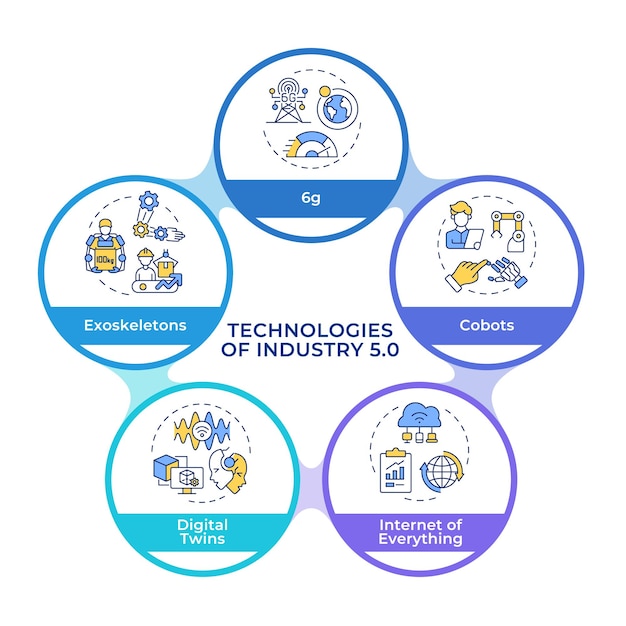Is a STEM Degree Still Worth It? Job Placement Analysis in 2025

Anúncios
In 2025, a STEM (Science, Technology, Engineering, and Mathematics) degree generally remains a worthwhile investment, offering competitive job placement rates and higher earning potential compared to many non-STEM fields, though specific outcomes vary by discipline and evolving industry demands.
Considering a STEM degree? Wondering if it’s still a smart move in 2025? Let’s dive into a data-driven analysis of job placement rates and explore the real value of a STEM degree.
Anúncios
The Enduring Appeal of STEM Education
STEM fields have consistently been at the forefront of innovation, driving economic growth and shaping our technological landscape. High demand for STEM graduates has fueled the perception of these degrees as reliable pathways to successful careers.
But is this perception still valid in 2025? The world of work is constantly evolving, and emerging technologies are rapidly transforming industries. Understanding the current state of STEM job placement rates is crucial for prospective students.
Anúncios
Historical Job Placement Trends in STEM
Historically, STEM degrees have boasted impressive job placement rates, often exceeding those of other fields. This trend is largely attributed to the growing reliance on technology across various sectors.
Factors Influencing STEM Job Placement
- Technological Advancements: Rapid innovation creates new roles and opportunities within STEM.
- Globalization: Global competition increases demand for skilled STEM professionals.
- Government Initiatives: Governments worldwide invest in STEM education and research to foster innovation.
In conclusion, the enduring demand for STEM skills suggests that these degrees maintain significant value in the job market, offering graduates promising career prospects.
A Data-Driven Look at 2025 STEM Job Placement Rates
While historical trends provide a valuable context, it’s vital to examine the most recent data to assess the current job placement rates for STEM graduates. This data-driven approach provides a more accurate understanding of the 2025 job market.
By analyzing current statistics, we can identify which STEM fields are experiencing the highest demand and which might be facing a more competitive job market. This analysis helps prospective students make informed decisions about their education.

STEM Fields with High Job Placement Rates
Certain STEM fields continue to exhibit exceptional job placement rates in 2025. These fields generally align with industries experiencing rapid growth and innovation.
STEM Fields with Moderate Job Placement Rates
- Computer Science: Strong demand due to the ongoing digital transformation.
- Engineering: Continued need for engineers in infrastructure, energy, and manufacturing.
- Healthcare: Growing demand for healthcare professionals with STEM expertise.
In conclusion, a data-driven examination of STEM job placement rates in 2025 reveals a nuanced landscape, with certain fields demonstrating stronger demand than others.
Emerging Trends Affecting STEM Careers
Several emerging trends are poised to significantly impact STEM careers in the coming years. Understanding these trends is crucial for students aiming to position themselves for future success.
These trends are not only transforming the nature of STEM jobs but are also creating new opportunities and challenges. Adapting to these changes will be essential for STEM professionals seeking long-term career growth.
The Rise of Artificial Intelligence (AI)
AI is rapidly transforming various industries, automating tasks and augmenting human capabilities. This trend has a profound impact on the demand for specific STEM skills.
The Internet of Things (IoT)
The increasing connectivity of devices through the IoT is creating vast amounts of data, driving demand for data scientists and analysts.

Sustainability and Green Technology
- AI-Driven Automation: Increased demand for AI specialists and robotics engineers.
- Data Science Surge: Growing need for skilled data scientists and analysts.
- Renewable Energy Growth: Rising demand for engineers and scientists in renewable energy.
In conclusion, emerging trends such as AI, IoT, and sustainability are reshaping the STEM landscape, creating new opportunities and demands for professionals who possess the relevant skills.
The Role of Soft Skills in STEM Success
While technical expertise remains essential for STEM careers, soft skills are increasingly recognized as critical components of success. Employers are actively seeking candidates who possess both technical and interpersonal skills.
Soft skills enable STEM professionals to collaborate effectively, communicate complex ideas, and lead teams. Developing these skills can significantly enhance career prospects and job satisfaction.
Communication Skills
The ability to clearly and concisely communicate technical information to both technical and non-technical audiences is highly valued by employers.
Teamwork and Collaboration
STEM projects often require collaboration across teams, making teamwork and collaboration essential skills.
Problem-Solving and Critical Thinking
- Communication: Effectively conveying technical concepts to diverse audiences.
- Teamwork: Collaborating with colleagues to achieve common goals.
- Leadership: Guiding and motivating teams to accomplish project objectives.
In conclusion, soft skills such as communication, teamwork, and leadership are becoming increasingly important for STEM professionals seeking to thrive in collaborative and dynamic work environments.
Beyond Job Placement: Long-Term Career Prospects
While job placement rates are a crucial consideration, long-term career prospects are equally important when evaluating the value of a STEM degree. STEM careers often offer opportunities for continuous learning, professional growth, and higher earning potential.
Beyond initial employment, STEM degrees can lead to leadership roles, entrepreneurial ventures, and contributions to groundbreaking research and innovation.
Potential for Higher Earning Potential
STEM careers generally offer higher median salaries compared to many non-STEM fields, reflecting the high demand for skilled professionals.
Opportunities for Advancement
STEM fields provide numerous pathways for career advancement, allowing professionals to progress into leadership roles and specialized areas.
Lifelong Learning and Innovation
- Higher Salaries: Reflecting the value and demand for STEM skills.
- Career Growth: Opportunities to advance into leadership and specialized roles.
- Innovation: Contributing to cutting-edge research and technological advancements.
In conclusion, STEM degrees offer promising long-term career prospects, including potential for higher earning potential, opportunities for advancement, and participation in ongoing innovation.
Making the Right STEM Choice for You
Choosing the right STEM field is a personal decision that depends on individual interests, aptitudes, and career goals. Considering your passions and strengths will help you find a fulfilling and impactful STEM career.
Researching different STEM fields, exploring internships, and seeking mentorship from experienced professionals can provide valuable insights and guidance.
Aligning Interests with Career Goals
Identifying your passions can lead to a more satisfying and rewarding STEM career.
Researching Different STEM Fields
Exploring various STEM disciplines can help you find the best fit for your skills and interests.
Seeking Mentorship and Guidance
- Passion Alignment: Combining your interests with a viable career path.
- Field Exploration: Researching different STEM disciplines to find the right fit.
- Mentorship: Seeking guidance from experienced STEM professionals.
In conclusion, making the right STEM choice involves aligning your interests with career goals, researching different STEM fields, and seeking mentorship to navigate the path to a fulfilling career.
| Key Point | Brief Description |
|---|---|
| 📈 Job Placement Rates | STEM degrees often lead to high job placement, driven by tech advancements. |
| 🤖 Emerging Trends | AI, IoT, and sustainability are reshaping STEM, creating fresh opportunities. |
| 🤝 Soft Skills Matter | Communication, teamwork, and leadership are critical for STEM success. |
| 💰 Long-Term Prospects | STEM degrees offer high earning potential and career advancement. |
Frequently Asked Questions
▼
Yes, STEM degrees generally offer high job placement rates and competitive salaries due to the increasing demand for skilled professionals in technology-driven industries.
▼
Fields like Computer Science, Engineering (especially in emerging sectors), and Healthcare tend to have strong job placement rates due to ongoing industry growth.
▼
AI is creating new opportunities and transforming existing roles within STEM, increasing the demand for specialists in AI, data science, and automation.
▼
Yes, soft skills like communication, teamwork, and leadership are increasingly important for STEM professionals to effectively collaborate and succeed in team-oriented projects.
▼
STEM degrees offer promising long-term prospects, including higher earning potential, opportunities for career advancement, and the chance to contribute to innovation and research.
Conclusion
In conclusion, the relevance and value of a STEM degree in 2025 remain significant, with ongoing technological advancements and industry growth driving demand for skilled STEM professionals. While individual career paths and success may vary depending on the specific field and acquired skills, a STEM education provides a strong foundation for long-term career success and the opportunity to contribute to innovation.